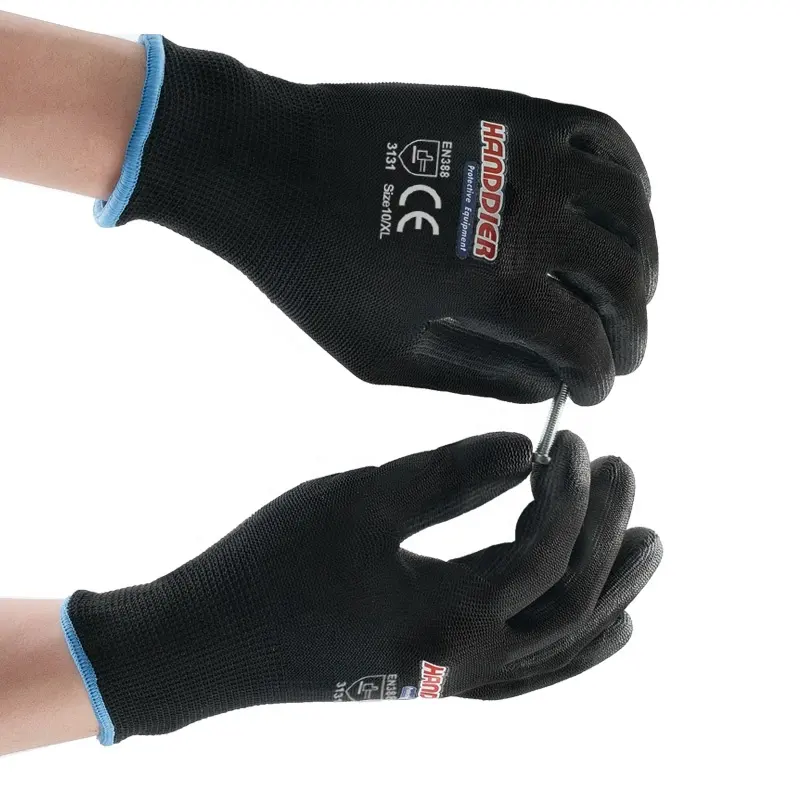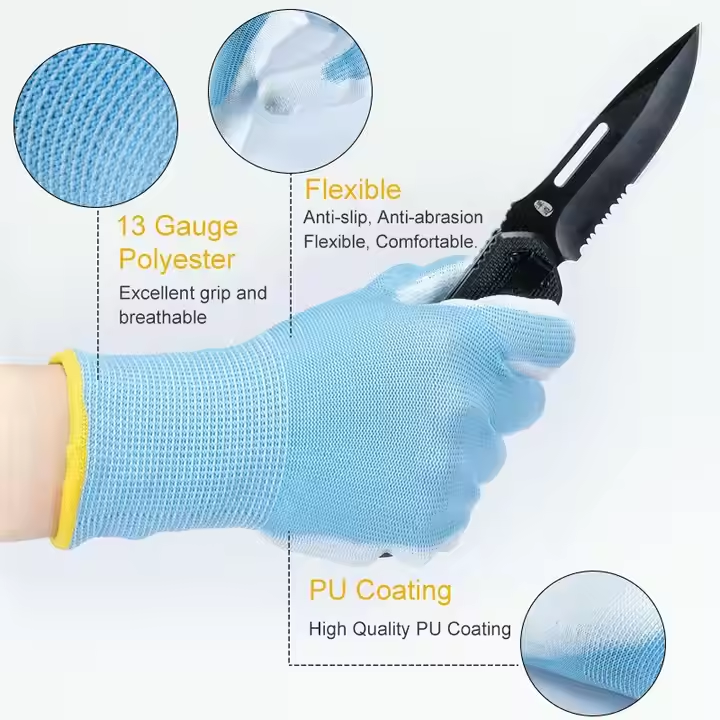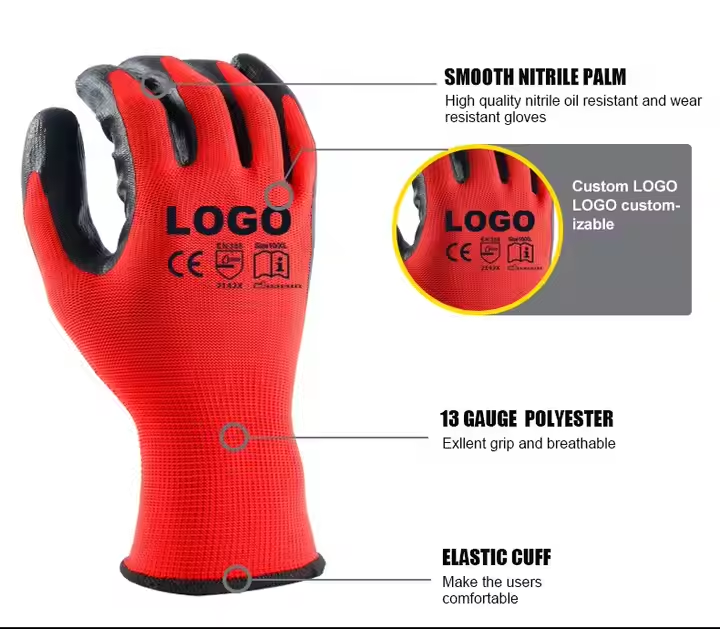
If you’ve ever worked in industrial, construction, or even garden settings, you know the importance of the right protective gloves. PU (polyurethane) gloves are one of the top choices due to their unique properties. But when should you use them, and what makes them so special? Let’s dive into this.
PU gloves are made from polyurethane, offering a combination of flexibility, comfort, and durability. They are ideal for tasks requiring precision and protection without sacrificing dexterity, such as in the electronics or assembly industries.
But is PU really better than other options like nitrile gloves? And what exactly does “PU coated” mean? Let’s take a closer look at these questions.
What is the difference between PU and nitrile gloves?
Choosing the right glove can be tricky, especially with so many materials available. PU and nitrile gloves are both excellent options, but they each have their own strengths. Let’s explore how they compare.
PU gloves are thinner and more flexible than nitrile gloves, which makes them ideal for tasks requiring precision. Nitrile gloves, on the other hand, are thicker and offer better resistance to punctures and chemicals.

When deciding between PU and nitrile gloves, you need to consider the task at hand. PU gloves are designed for lighter work where dexterity is key, such as in electronics assembly or packaging. The thin, flexible nature of PU allows for greater movement and precision, which is crucial when handling small parts or performing tasks that demand attention to detail. However, they’re not as puncture-resistant as nitrile gloves.
On the other hand, nitrile gloves are thicker and offer superior puncture and chemical resistance. This makes them better suited for heavy-duty tasks in industries like healthcare, chemical handling, or food processing. Nitrile gloves are also latex-free, making them an excellent choice for people with latex allergies.
Both types of gloves have their place, but understanding the nature of the job will help you make the right choice.
What is PU coated mean?
When you hear "PU-coated," you might wonder what that really means. The term refers to the process of applying a thin layer of polyurethane onto the glove material for enhanced performance. Let’s explore what benefits this coating brings.
PU-coated gloves have a polyurethane layer that provides better grip, durability, and resistance to wear. This coating enhances the glove’s ability to protect against light abrasion without sacrificing comfort.

PU coating can be applied to various base materials, such as cotton, polyester, or nylon, to improve their protective properties. The coating is typically smooth and provides a high level of dexterity while maintaining flexibility. The lightweight nature of PU-coated gloves makes them ideal for tasks where fine motor skills are necessary, such as handling delicate electronics or machinery parts.
In addition to improving grip and comfort, the PU coating also provides resistance to light abrasion, oils, and certain chemicals, making them suitable for general industrial tasks. These gloves are particularly useful in industries where workers need a combination of dexterity and protection against the environment.
The coating also extends the life of the gloves by providing a more durable surface. While they may not offer the same level of puncture resistance as nitrile-coated gloves, PU-coated gloves are an excellent option for many light-duty tasks.
Is nitrile the same as polyurethane?
Nitrile and polyurethane are often compared, but they’re not the same. While both are synthetic materials used for gloves, they have distinct properties that make them suitable for different applications. Let's break down the key differences.
Nitrile is a synthetic rubber, while polyurethane is a thermoplastic polymer. Nitrile gloves are thicker and offer better puncture resistance, while polyurethane gloves are thinner, more flexible, and ideal for precise tasks.

The main difference between nitrile and polyurethane lies in their chemical composition and physical properties. Nitrile is a type of synthetic rubber known for its excellent resistance to oils, fuels, and solvents, which makes it highly suited for industries dealing with chemicals. Its thicker construction also provides better puncture resistance, which is why it's commonly used in heavy-duty work environments, such as medical or automotive fields.
Polyurethane, on the other hand, is a versatile polymer that offers superior flexibility, making it ideal for lighter, more dexterous tasks. While PU gloves do not provide the same level of puncture resistance as nitrile gloves, their thin and flexible nature makes them perfect for jobs where you need to feel the object you’re working with, like in electronics, light assembly, or precision tasks.
Both materials have their own strengths, so the choice between nitrile and polyurethane should be based on the level of protection required and the type of task at hand.
Conclusion
In short, PU gloves are perfect for tasks requiring dexterity and light protection, while nitrile gloves are better suited for more demanding environments. Choose based on the specific needs of your work.
